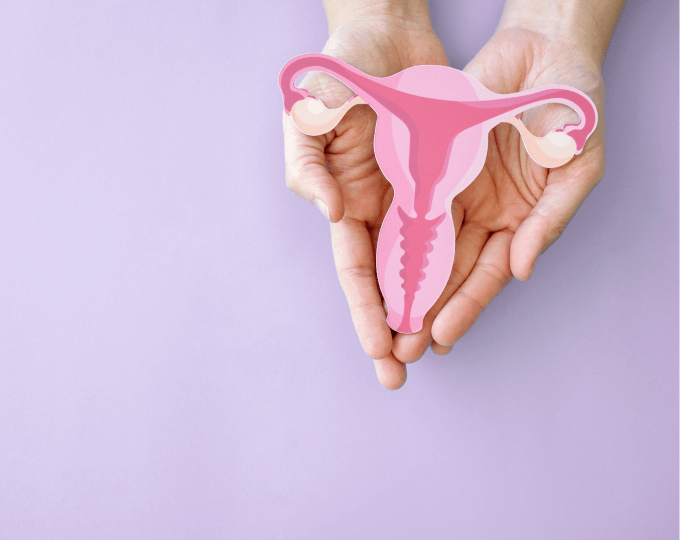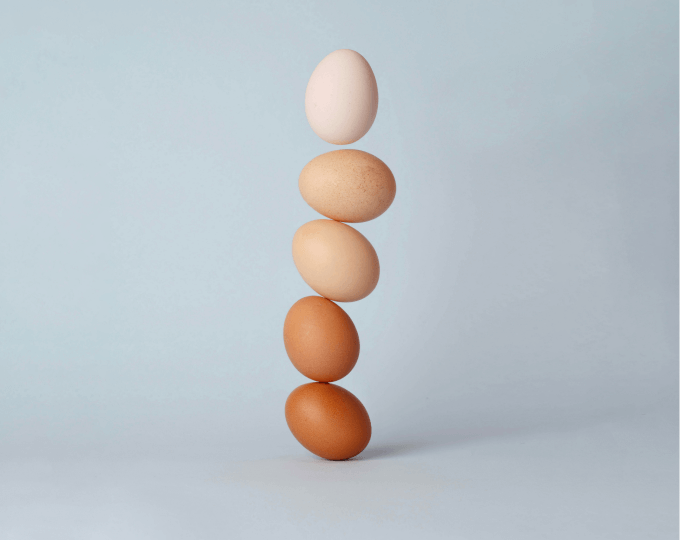Themen dieses Blogartikels:
Table of contents
Hormones in balance – why they are so important
- Stress
- Lack of sleep
- Hormonal contraception
- Other causes
- Common signs of hormonal imbalance
- How to regulate your hormones
- Stopping hormonal contraception: what you should consider
- What can you do specifically to make the transition easier?
- Hormonal phases in life: From puberty to menopause
- Sources & Bibliography
Hormones in balance – why they are so important
Every tiny function in our body is influenced by hormones . These chemical messengers regulate sleep patterns, metabolism, reproduction, mood, and much more. If your hormonal system gets out of sync, it is referred to as a hormonal imbalance - and this can manifest itself in a variety of symptoms. Hormonal imbalances can occur in different forms, for example as an underactive thyroid, PCOS or other illnesses. In this blog article, we give you a comprehensive overview: What are the common causes of hormonal imbalances , which signs indicate an imbalance, and how can you bring your hormones back into balance ? We will focus on female hormones , the influence of stress, lack of sleep , and hormonal contraception . We will also look at the role of testosterone and androgens , especially in relation to PCOS , and take a look at the hormonal phases in life - from puberty to menopause.
You'll see: Hormonal imbalance is nothing unusual and affects many people, regardless of age or gender, and can often be positively influenced with holistic approaches. Read on for scientifically sound, yet easy-to-understand information and tips.
Causes of hormonal imbalances
Hormones react very sensitively to our lifestyle and our environment. Below, we present some of the most common causes of hormonal imbalances—particularly stress , lack of sleep , and the use or discontinuation of hormonal contraception . Hormonal processes in the body are influenced by various external factors that control numerous biological and physiological processes. Of course, there are many other influencing factors (from dietary habits to environmental toxins to genetic predispositions), but these three play a particularly large role in modern lifestyles.
stress
Physical or mental stress triggers stress hormones – especially cortisol – to overdrive. This is not a problem in the short term. However, if stress levels remain chronically elevated, it can significantly disrupt the balance of other hormones². Cortisol is produced in the adrenal cortex and has a variety of effects. With prolonged stress, the stress response system is constantly running and cortisol remains permanently elevated . This has a signaling effect on your body: It goes into survival mode and prioritizes acute issues (stress management) over the reproductive system. The result: The production of sex hormones falls behind¹¹. In women, chronic stress can lead to less GnRH (gonadotropin-releasing hormone) being released from the hypothalamus – the hormone that ultimately controls ovulation and menstruation. If GnRH is absent, ovulation and menstruation do not occur ; this is known as stress-induced hypothalamic amenorrhea². This phenomenon can be seen, for example, in women who are under extreme pressure to perform, who have eating disorders or a lot of psychological stress. Even less extreme levels of stress can be noticeable: many women notice cycle shifts or more severe PMS symptoms during stressful phases. The body "presses pause" when it comes to reproduction - a survival reflex from earlier times. Stress also indirectly affects the thyroid, insulin regulation and other hormonal cycles, which can further exacerbate the imbalance. It is important to know: stress is a "silent saboteur" - we often don't even notice how much constant tension is affecting us until the hormones make themselves felt.
lack of sleep
Good sleep is essential for a healthy hormonal balance. Important hormonal cycles take place at night – for example, growth hormones and regulatory hormones are released during sleep. Chronic sleep deprivation disrupts these rhythms. For example, cortisol levels rise when you don't get enough sleep, similar to when you are stressed. At the same time, other hormones can drop. A blatant example is a study from the University of Chicago: young men who slept only around 5 hours a night for a week ended up with testosterone levels that were 10–15% lower than when they had slept enough¹. This decline is equivalent to aging by 10–15 years – caused solely by a lack of sleep!¹ Testosterone may be known as the “male hormone”, but women also need it in small amounts for energy, muscle maintenance and libido.
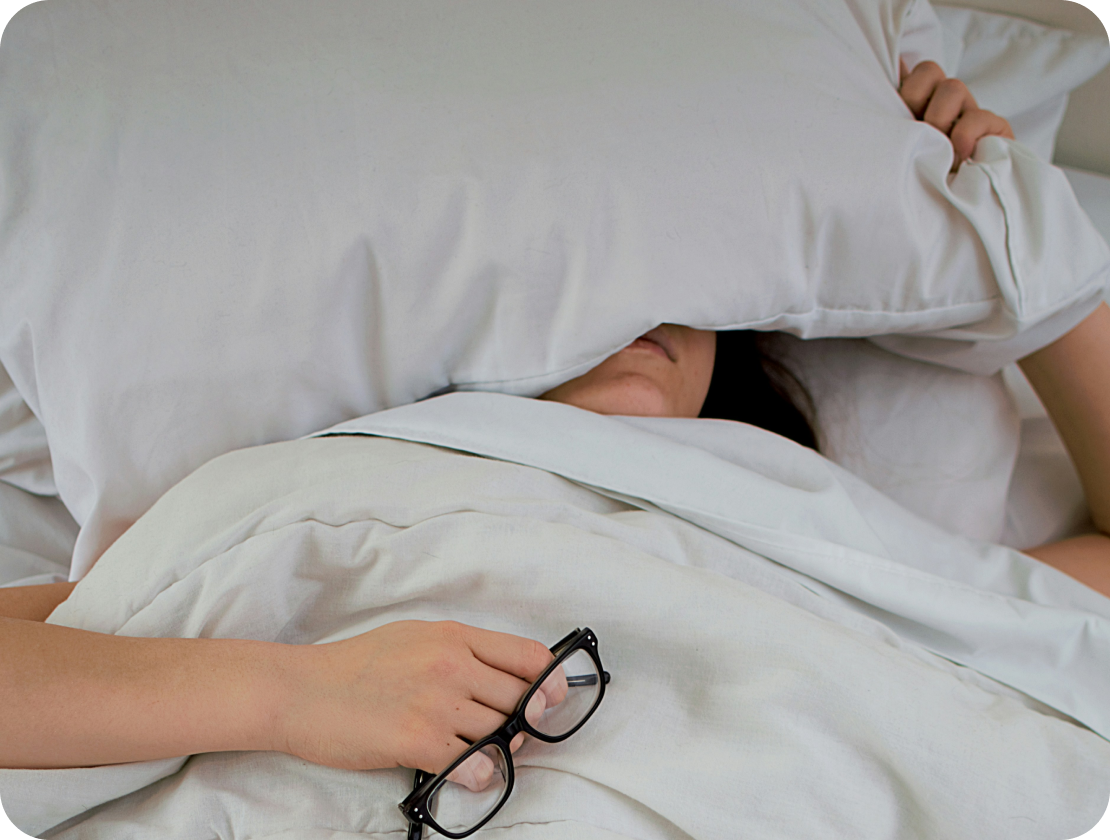

In women, sleep deprivation also negatively impacts the menstrual cycle : Irregular sleep-wake times can disrupt the delicate balance of melatonin , stress hormones , and sex hormones. Many women report increased PMS, mood swings, or cravings when they sleep poorly for an extended period. Cortisol also plays a role here: Too little sleep means stress for the body and can—as described above—disrupt the hormonal axis between the brain (hypothalamus, pituitary gland) and the ovaries.
Conclusion: Good sleep is not a luxury, but the basis for hormonal balance.
Hormonal contraception (the pill, etc.): birth control pill, hormonal coil, etc.
Hormonal contraception (the pill, etc.): The contraceptive pill, hormonal IUD, and the like specifically interfere with your hormone balance to prevent ovulation. While you're taking the contraceptive, the artificial estrogen and progestin doses of the contraceptive dominate; your natural cycle is suppressed. Many women tolerate this well, but some experience side effects such as low mood, loss of libido, or weight gain while using hormonal contraception – which shows that external hormone intake influences the delicate internal balance. Things get particularly exciting when you stop taking the pill or other hormonal contraceptives: the body then has to "ramp up" its own hormone production again. In the first few months after stopping, your cycle and skin can go haywire . Some women experience increased acne, hair loss, or irregular cycles , even if everything seemed stable while on the pill. This is colloquially known as post-pill syndrome . This term is not strictly medically defined, but describes the symptoms observed after discontinuation of hormonal contraception.
It's important to know: Many of the symptoms aren't directly caused by "something being broken" - often the pill simply prevented existing imbalances from coming to light. For example, the pill is often prescribed for acne or menstrual problems. If you stop taking it, these original problems sometimes return because they weren't cured, but merely masked. What's more, the pill can attack your body's nutrient reserves . Studies show that certain vitamin and mineral levels drop with long-term pill use - such as folic acid , vitamin B6 , B12 , zinc , and others. However, these micronutrients are important for smooth hormone production. A deficiency can therefore further impair the balance, especially after stopping the contraceptive. Overall, hormonal contraception is an individual balancing act. If you stop taking the pill after years, give your body some time to adjust again. We'll explain in more detail below what helps and what you should pay attention to.
Other causes
In addition to the factors mentioned above, diet , lack of exercise or excessive sport, environmental toxins (xenoestrogens) , alcohol , or certain medications can also contribute to hormonal imbalance. Diseases such as thyroid disorders or polycystic ovary syndrome (PCOS) are also possible causes. A hormonal disorder such as PCOS or a thyroid disorder can lead to significant hormonal imbalances. Therefore, if symptoms persist, a doctor should always be consulted to determine whether a specific illness is present.
Common signs of hormonal imbalance
So how do you know if your hormones are out of balance? The symptoms can be very varied and non-specific—after all, hormones affect almost every body system. However, some common signs should make you sit up and take notice:
- Menstrual disorders: Your cycle becomes irregular, your period stops without pregnancy, or is suddenly much heavier or more painful than before. Too frequent (polymenorrhea) or too infrequent (oligomenorrhea) cycles can indicate an estrogen-progesterone imbalance. Severe PMS (premenstrual syndrome) with mood swings, migraines, water retention, etc. is also a sign – a progesterone deficiency in the second half of the cycle often plays a role here.
- Chronic fatigue and sleep disturbances : Despite getting enough sleep, you constantly feel exhausted, lack energy, or struggle to get going in the morning. Exhaustion is a common consequence of hormonal imbalance and can occur along with fatigue. Conversely, you may also experience difficulty falling asleep and staying asleep . Such symptoms can be related to thyroid hormones (e.g., hypothyroidism) or an excess of stress hormones that disrupts your natural circadian rhythm.
- Mood swings, irritability, depression: Hormones influence our neurotransmitters and thus our mood. An imbalance can manifest itself in irritability, lack of motivation, or depressive moods . Many women are familiar with premenstrual low moods – but if it occurs consistently or your cycle sends you on an emotional rollercoaster, it's worth taking a look at your hormonal status. In men, a testosterone deficiency can lead to lack of motivation and low mood.
- Weight changes and metabolic problems: Are you gaining weight for no apparent reason, especially around your stomach? Or can't lose weight despite dieting? Hormones such as insulin, cortisol, thyroid hormones, estrogen, and testosterone control your metabolism. An imbalance can promote cravings (e.g., in cases of insulin resistance), cause water retention, or slow fat burning. Chronic stress, in particular, often leads to weight gain (cortisol promotes fat storage in the stomach) and cravings for sweets – a warning signal from the body that something is out of control.
- Skin, hair, nails: Hormonally-related skin problems primarily include acne, an increase in pimples on the chin/back , or dark spots . Androgens (male hormones) can increase sebum production, which is why acne often occurs during puberty or in androgen-induced PCOS. Conversely, estrogen deficiency (e.g., during menopause) can make the skin drier and more wrinkled. Hair loss or thinning hair is also often due to hormonal factors (thyroid, excess testosterone, or a drop in estrogen). Some women also notice increased hair growth in unusual places (face, stomach)—a sign of androgen excess . Brittle nails and very dry skin can be related to an underactive thyroid or estrogen deficiency.
- Libido and fertility problems: A lack of sexual desire can have many causes – one of which is hormonal. Estrogen and testosterone fuel a woman's libido; if they're lacking, desire and often vaginal lubrication are lost, which can make sex unpleasant. Men with testosterone deficiency often notice a decrease in sexual desire and possible erectile dysfunction . Difficulty getting pregnant can, of course, have many causes, but hormonal imbalances (lack of ovulation, corpus luteum deficiency, thyroid disorders, etc.) are often under the radar.
- Other information: There are numerous other symptoms that may indicate hormonal causes: headaches/migraines (often cycle-dependent), digestive problems (due to interactions with the stress and nervous systems), increased sweating or flushing (e.g., night sweats due to progesterone deficiency or perimenopause), rapid heartbeat or palpitations (thyroid!), ovarian cysts or breast tenderness, and myoma formation (often estrogen dominance), and even minor skin changes such as increased skin tags (fibroids) are associated with insulin resistance. In short: the spectrum is broad.
How to (re)regulate your hormones
1. Reduce stress and support the adrenal glands:
Since chronic stress is one of the biggest hormone killers, stress management is a top priority. Build relaxation breaks into your daily routine – for example, through breathing exercises, yoga, meditation, or walks . Even 10 minutes of conscious relaxation every day helps lower cortisol levels. Sport is a double-edged sword: Moderate exercise reduces stress and improves insulin sensitivity (important for hormonal balance). But overtraining can, in turn, increase stress hormones. So find an exercise routine that's good for you – e.g., regular endurance sessions at a moderate pace , supplemented by strength training for healthy muscles and bones.


Also pay attention to small moments of pleasure and social contact – laughter and friendships have been proven to reduce stress hormones. There are also adaptogenic botanicals to support your adrenal glands: A well-known example is ashwagandha , also known as Indian ginseng. This Ayurvedic herb helps the body cope better with stress and can noticeably reduce elevated cortisol levels⁴. Studies show that ashwagandha has been shown to reduce anxiety and cortisol by 20–30% in stressed individuals⁴. Rhodiola rosea (roseroot) and medicinal mushrooms such as reishi and cordyceps are also adaptogens. They can be used in conjunction with a knowledgeable therapist to calm your stress system.
2. Optimize sleep and biorhythm:
Get enough sleep (7-9 hours) and maintain a regular sleep-wake cycle. Try to go to bed and wake up at the same time every day – our hormones thrive on routine. Keep your bedroom well-darkened (light disrupts nighttime melatonin production) and avoid screens in the hour before bedtime to prevent the blue light from suppressing your sleep hormone melatonin. A few sleep rituals – such as a cup of herbal tea, a warm bath, or gentle stretching – can signal to your body that it's time to rest. If you work shifts or suffer from frequent jet lag, keep in mind: This is an enormous challenge for your hormonal rhythm. A healthy lifestyle is especially important to mitigate the effects.


You can find more tips for better sleep and your health in our blog articles
3. Keep blood sugar stable:
Insulin fluctuations have a strong effect on sex hormones. If blood sugar rises rapidly after a meal high in sugar, the body releases insulin – and high insulin levels also stimulate the production of androgens in the ovaries, for example, which is particularly problematic in PCOS. So try to keep your blood sugar as balanced as possible: Eat wholesome carbohydrates (whole grains, vegetables, legumes) instead of fast-acting sugar and white flour. Always combine carbohydrates with protein and healthy fats , which slows down absorption. Avoid prolonged overeating and crash diets – both disrupt your system. You can consider chromium as a little helper: This trace element improves the effect of insulin on the cells and can reduce cravings.
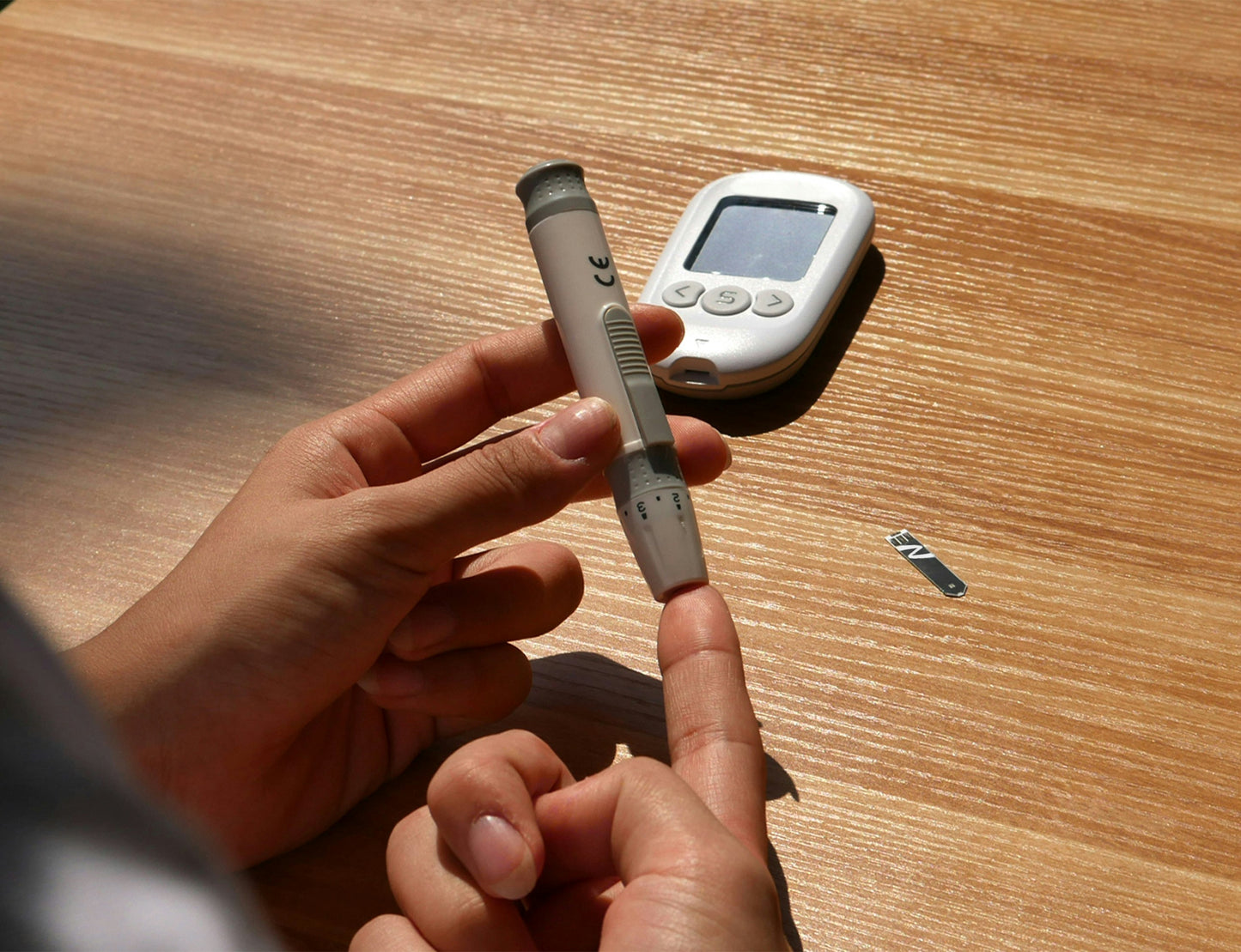

In studies, chromium , for example, has shown positive effects on blood sugar metabolism in women with insulin resistance. Another exciting building block is inositol – a B vitamin-like substance (sometimes called vitamin B8). Myo-inositol, in particular, has proven to be a true miracle cure for women with PCOS: It has been proven to improve insulin uptake into cells and lower elevated testosterone levels , which can help promote regular ovulation.⁵ A recent meta-analysis from 2023 confirmed that inositol treatments are safe and effective in improving both hormonal balance and metabolic parameters in PCOS.⁵ Many women report a more regular cycle after a few months of inositol use. Inositol can be obtained through diet (e.g., in fruits, beans), but higher doses can also be taken as a supplement – for example, as a component of special blood sugar balancing medications.
4. Adjust your diet to your cycle
Did you know that you can vary your diet throughout your menstrual cycle to optimally support natural hormonal fluctuations? This concept is called cycle nutrition . In the first half of your cycle (follicular phase, dominated by rising estrogen), you can, for example, incorporate more phytoestrogens from flaxseed, soy, and legumes to support estrogen metabolism. In the second half of your cycle (luteal phase, progesterone phase), you often have a higher calorie need and appetite – this is where protein-rich and magnesium-rich foods (nuts, green vegetables) are beneficial, as they also reduce nervousness and cravings.
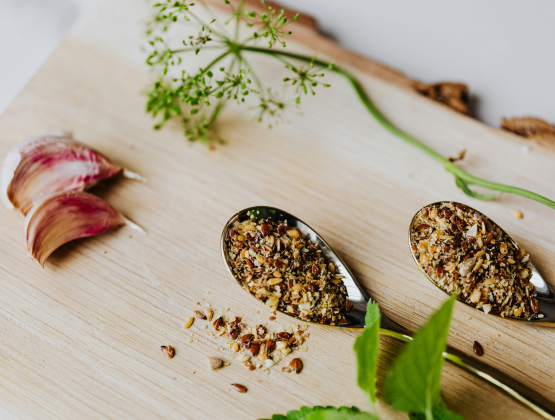

Overall, a low-inflammatory diet with plenty of vegetables, omega-3 fats, and moderate amounts of fruit helps keep your hormones balanced. Avoid excessive caffeine and alcohol consumption, as both can negatively impact hormones (caffeine boosts cortisol, and alcohol interferes with estrogen breakdown in the liver, among other things).
Don't forget to drink : Drinking enough water supports your metabolism and the transport of hormones. In our article on cycle nutrition, you'll find detailed tips on which nutrients are particularly helpful in each phase of your cycle.
Advertisement
Specially developed for women's health & the hormonal system
With the premium natural ingredients Ashwagandha, Green Tea Extract (EGCG), Astaxanthin & Dong Quai
Supplemented with vitamin B6 & pantothenic acid for hormone regulation
No fillers or flavors
Developed with doctors & experts
Delicious taste
Easy-to-dose liquid product

5. Targeted micronutrient supplementation:
Various vitamins and minerals play a key role in hormone production and regulation. Here's a selection of micronutrients that may be beneficial for hormonal imbalances—always consult with a doctor or therapist, of course, especially when higher dosages are involved:
- Vitamin D : Strictly a hormone itself, it influences gene activity in almost all tissues. A good vitamin D level is important for ovarian function and insulin sensitivity. Many women (especially in our latitudes) are vitamin D deficient. Correcting this deficiency can have a positive effect on PMS, fertility, and mood.
- Vitamin B6 : This vitamin is a cofactor in the formation of neurotransmitters (e.g., serotonin) and helps break down excess estrogen in the liver. Vitamin B6 is often used to treat PMS symptoms . In fact, studies suggest that B6 (in moderate doses up to 100 mg/day) can improve mood and other PMS symptoms. One review found that women taking vitamin B6 experienced less premenstrual depression and irritability than those taking a placebo. Good sources of B6 include salmon, walnuts, bananas, and avocados. For more severe symptoms, temporary supplementation may be beneficial.
- Zinc : The trace element zinc is essential for the production of thyroid and sex hormones. It also acts as an antioxidant and can reduce inflammation . Low zinc levels are often found in women with PCOS; zinc supplementation can help improve insulin resistance and androgen levels (some smaller studies have shown, for example, that zinc supplements moderately reduced testosterone levels and improved skin appearance and menstrual cycles). Zinc is also popular as a skin mineral for acne. Zinc gluconate or zinc bisglycinate are often used in dietary supplements – it is important not to exceed the recommended amount permanently, as too much zinc can disrupt copper levels.
- Omega-3 fatty acids : These polyunsaturated fatty acids (especially EPA and DHA , e.g. from fish oil or algae) have a strong anti-inflammatory effect . Since dormant inflammation is often associated with hormonal imbalances (e.g. in PCOS or endometriosis), omega-3s are a good support. A meta-analysis of women with PCOS showed that omega-3 supplementation improves various hormonal and metabolic parameters , including lowering CRP (inflammatory marker) and can even slightly reduce excessive LH and testosterone levels⁶ . Omega-3 fatty acids also contribute to healthy cell membranes – which in turn supports hormonal action at the target cells – and can alleviate mood swings. If you don't eat fish, high-quality algae oil capsules are a good option.
- Inositol: (already mentioned above) – keyword PCOS and insulin. Myo-inositol and, in some cases , D-chiro-inositol in combination have been successfully used in numerous studies to stimulate egg maturation and improve metabolic status in women with menstrual irregularities. It is now almost a standard in PCOS therapy because it is so well tolerated compared to pharmaceutical medications and yet still produces significant improvements.⁵
- Herbal helpers: In addition to laboratory-grown micronutrients, there are also herbal extracts that have traditionally been used to treat women's ailments. For example , Angelica sinensis – known as dong quai or female ginseng. In Chinese medicine, dong quai is a proven tonic for the female cycle. Modern research suggests that angelica extract may have mild estrogen-like effects, which can help, for example, during menopause .
A clinical study with a preparation of Angelica sinensis and Matricaria chamomilla (chamomile) showed that it significantly reduced hot flashes in menopausal women (by ~90% compared to ~20% with placebo).⁷ No significant side effects occurred.⁷ For younger women, dong quai is often used to treat menstrual cramps or regulate cycles – however, high-quality studies are still lacking in this area. Another well-known herb is chasteberry (Vitex agnus-castus) , which can be particularly helpful for PMS and luteal insufficiency (progesterone deficiency). It works via neurotransmitters in the brain and can regulate prolactin secretion as well as gently stimulate the body's own progesterone production . Chasteberry is available over the counter, but patience is required – the effects often take 2–3 months to develop.
Important: Although there are many over-the-counter remedies available—from chasteberry to progesterone creams to melatonin — you should never take or apply hormones on your own. Bioidentical hormones (progesterone, DHEA, etc.) in particular, while "natural," have a significant impact on your system. If you suspect you're deficient in a hormone, first have your hormone levels checked in a laboratory and then discuss the next steps with a doctor. If in doubt, it's better to first work with lifestyle and gentle naturopathic remedies and only attempt more radical hormone replacement therapies under medical supervision.
Stopping hormonal contraception: What you should consider
Let's return to the topic of stopping the pill and other contraceptives , as this concerns many readers. So, you've decided to stop using hormonal contraception – whether to get pregnant or simply to feel "yourself" again without artificial hormones. What's happening in your body now, and how can you manage the transition period well?
First of all: Be patient with yourself. Your body may have been receiving a "hormonal template" from outside for years. When this template disappears, the body's own hormone production has to wake up again . The pituitary gland begins to secrete FSH and LH again to stimulate the ovaries to mature follicles. It can take several weeks to months for a regular cycle to return. For most women, the cycle stabilizes within the first three months after discontinuing use – for some faster, for others slower.
It is not unusual for your period to be absent or irregular in the first 1-2 cycles after stopping. Your body has not ovulated – the uterine lining needs to build up again. Give it time. However, if you still have not had a natural period after about 6 months (and pregnancy has been ruled out), it is advisable to see a gynecologist. They should then check your hormone levels to determine the cause – sometimes there is an underlying PCOS predisposition that is only now becoming apparent, or your thyroid is not working properly. In general , however, the body usually regains balance on its own once the artificial hormones have been broken down. Around 80% of women have normal cycles again within 3-4 months – so don’t let horror stories drive you crazy.
Nevertheless, the transition phase can be challenging. Typical symptoms in the months after stopping the pill include worsening skin (post-pill acne) , increased hair loss, mood swings, irregular cycles, or spotting. Why? While you were on the pill, for example , your ovaries were in a deep sleep . After waking up, they sometimes produce hormones uncontrollably before a regular ovulation rhythm is established. There may be an excess of other hormones (hence pimples, hair loss), or the corpus luteum phase may be weak at first (hence low moods, spotting).
What can you do specifically to make the transition easier?
Support the liver and intestines:
These organs play a key role in hormone breakdown. After discontinuation, they may need to excrete stored synthetic hormones and the resulting breakdown products. Make sure you eat a liver-healthy diet (little alcohol, bitter foods like arugula, artichokes, milk thistle tea) and a high-fiber diet for regular bowel movements. This will help flush excess hormones out of the intestines and prevent them from being reabsorbed.
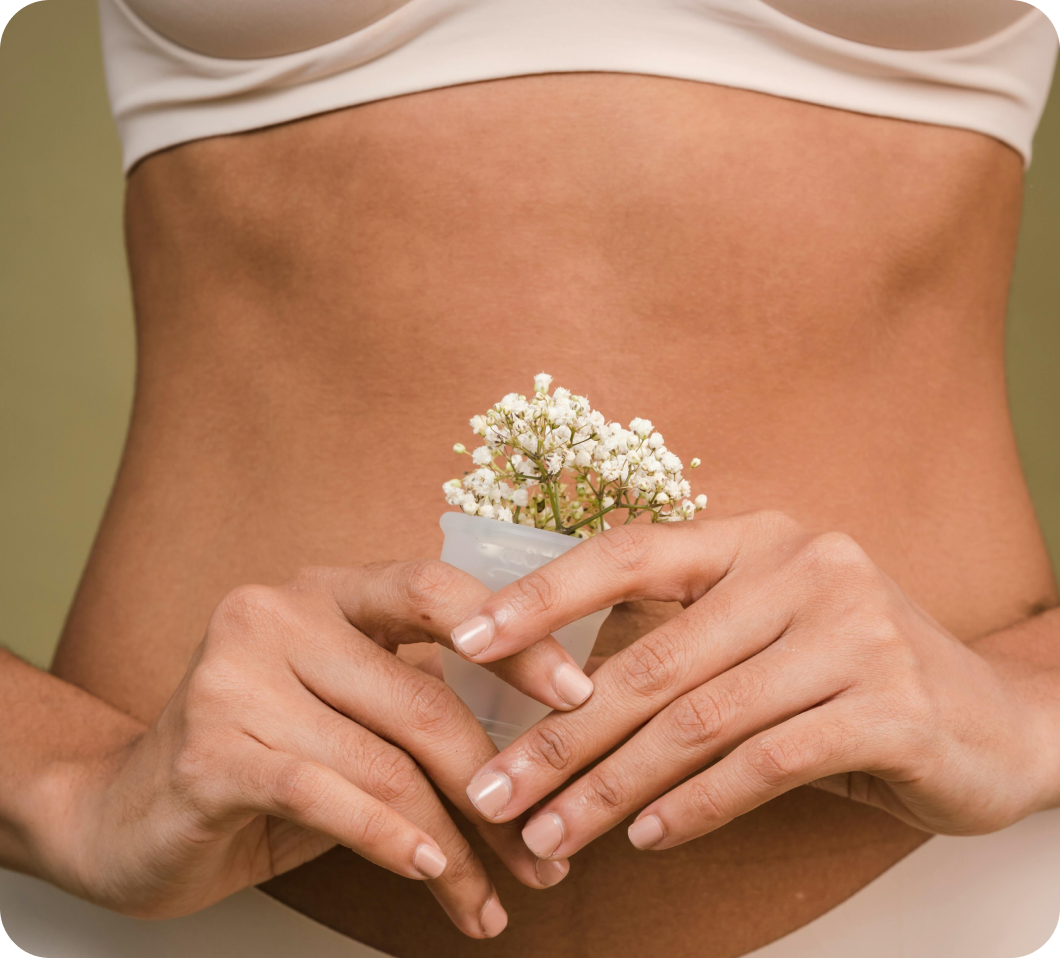

Replenish nutrients
If the pill has left you with micronutrient deficiencies, now is the time to fill them. A good women's multivitamin or targeted supplements (especially the aforementioned critical nutrients : B vitamins , zinc , magnesium , and vitamin D ) can be helpful. It's best to get a blood test to see where you stand.
Cycle tracking:
Start observing your natural cycle. Measure your basal body temperature in the morning or pay attention to bodily signals like cervical mucus . This will help you recognize if and when ovulation returns. Many women find it motivating to feel their own cycle again after years of "artificial rest"—even if it's irregular at first. Cycle tracking also helps you differentiate PMS from real low moods and generally better understand your body.


Use gentle hormone herbs
There are a few plants that can be particularly supportive during the post-pill phase. Chasteberry (Vitex) was already mentioned above – it can help restore communication between the pituitary gland and ovaries and relieve PMS. Yarrow, lady's mantle, lemon balm , and St. John's wort (the latter for mood swings) are also traditional aids in gynecology after stopping the pill. It's best to consult a naturopathic gynecologist or alternative practitioner about what's best for your situation.
Consider contraception
Don't forget – if you're stopping the pill and don't want to get pregnant (yet), consider alternative contraception! Ovulation may return sooner than expected. Methods like condoms, diaphragms, or symptothermal methods (if you have a regular cycle) are available.


Be patient and be good to yourself
Perhaps the most important point: Don't put pressure on yourself to "function" like clockwork again immediately. Get enough sleep, be kind to yourself, and talk to those around you about the fact that you're going through a hormonal transition—we often encounter more understanding than we expect.
And remember: If you really don't get your cycle back after a reasonable amount of time, or if you're suffering greatly from the after-effects, seek medical advice. Sometimes, for example, long-term pill use can lead to polycystic ovary syndrome (post-pill PCOS, a temporary form of PCOS), which can be treated specifically. Usually, things settle down, but getting support isn't a sign of weakness; it's a sign of wisdom.
PCOS – When androgens go crazy
A particularly common example of hormonal imbalance in women is polycystic ovary syndrome (PCOS) . An estimated 5–15% of women of childbearing age are affected, making PCOS one of the most common hormonal disorders of all. PCOS is characterized by an excess of androgens and chronic menstrual irregularities (usually, lack of ovulation). Let's take a look at what exactly happens here.
The three classic main features of PCOS are: hyperandrogenism (clinically or laboratory-detectable), infrequent or absent ovulations (often resulting in cycles >35 days or no periods at all), and polycystic ovaries on ultrasound (many small follicles). According to common criteria, two of these three features must be present for diagnosis. However, the picture can vary greatly – from slim women with only slight cycle irregularities to overweight women with heavy hair growth and complete amenorrhea. There are many gradations.
Causes and mechanisms: PCOS is a complex interplay of genetic predisposition and lifestyle. Insulin resistance appears to be central: in many (not all) affected individuals, the cells respond poorly to insulin, which is why the pancreas secretes more insulin. Insulin, in turn, stimulates the ovaries to produce more androgens. The excess of androgens disrupts follicle maturation – follicles do not develop, but instead many small, immature follicles accumulate (hence "polycystic" ovaries). Ovulation rarely occurs, and consequently progesterone is lacking in the second half of the cycle – estrogen, on the other hand, is relatively excessive (because many follicles produce a little estrogen but never cause a dominant follicle to ovulate). This estrogen dominance can lead to thickening of the uterine lining and intermenstrual bleeding, while the androgen excess triggers the aforementioned symptoms such as acne and hirsutism. The increased insulin and androgen levels often lead to weight gain – and more visceral fat itself produces inflammatory factors and hormones that exacerbate the problem. It's easy to get caught in a vicious cycle of insulin resistance, obesity, and hormonal chaos .
However, there are also PCOS patients without insulin resistance , especially very slim women. In these cases, the adrenal glands are more likely to be responsible for increased androgen production (usually DHEA), often due to stress. Therefore, not all PCOS is the same – the syndrome can have different "faces" depending on the individual.
Symptoms of PCOS: In addition to the physical symptoms (irregular or absent menstruation, infertility , skin problems , hair loss ), many women also suffer from psychological stress. PCOS can be accompanied by mood swings, anxiety, depression, and self-esteem issues —partly due to hormonal factors, partly as a reaction to the physical changes. Women with PCOS also have an increased risk of secondary diseases : In the long term, they can develop type 2 diabetes , dyslipidemia, high blood pressure, and cardiovascular problems. Therefore, it's important to take PCOS seriously and not just view it as a cosmetic issue.
Treatment approaches: The good news: There's a lot you can do! The first line of PCOS treatment is almost always lifestyle intervention . Even a 5–10% weight loss (if you're overweight) can be enough to get the cycle going again, because insulin levels drop and sensitivity increases. A diet should be carbohydrate-conscious (not necessarily low-carb, but quality over quantity), high in protein, and rich in fiber. Exercise directly improves insulin action in the muscles—ideally, combinations of strength training (increases muscle mass, which burns sugar) and endurance training are ideal.
Dietary supplements – in addition to those already mentioned (vitamin D, inositol, omega-3, zinc, chromium) – are very popular for PCOS: For example, antioxidants such as vitamin E and alpha-lipoic acid help reduce the often elevated oxidative load . Magnesium (for insulin signaling and stress reduction) and N-acetylcysteine (NAC) are also being researched. Studies have shown positive effects on cycle regularity and ovulation rates, presumably by improving insulin sensitivity similar to metformin. Inositol deserves further emphasis: It is now considered an evidence-based therapeutic component for PCOS, with partly comparable efficacy to metformin, but better tolerability.⁵
Medication options are primarily considered for PCOS patients who want to have children or whose metabolic condition is becoming risky. Metformin (an insulin sensitizer) is often used to break insulin resistance – it also lowers androgen levels somewhat and can trigger cycles. In cases of severe hirsutism or acne, antiandrogens or the pill are sometimes prescribed to provide topical relief. However, this does not address the cause, so lifestyle changes should always be addressed in parallel. If you are trying to conceive, there are ovulation triggers such as clomiphene or newer medications (letrozole) to force ovulation. Many women with PCOS become pregnant with assistance – it sometimes requires patience, but it is absolutely possible.
PCOS and mental health: Don't forget to take good care of your mental health, too. The constant battle with weight and skin can be exhausting. If the diagnosis is bothering you, seek out like-minded people (there are PCOS communities) or professional help. Stress reduction, in turn, is also beneficial for your hormones—so it's a win-win situation if you learn to be kind to yourself.
Hormonal phases in life: From puberty to menopause
Our hormonal balance is not a static system—it changes dynamically throughout our lives . Women, in particular, experience distinct hormonal phases , each with its own "rules": puberty, the fertile years, perimenopause, and menopause . A hormonal imbalance must always be considered within the context of these phases. What is normal during puberty would be an imbalance during menopause—and vice versa. Let's briefly examine these phases:
puberty
During puberty, the gonads (ovaries and testes) awaken under the influence of the master hormones GnRH, LH, and FSH. In girls, this means the ovaries begin producing larger amounts of estrogen, which leads to breast development, body shape, and ultimately to the onset of menarche (the first period) . This phase is characterized by sometimes chaotic hormonal fluctuations —the system needs to adjust first. Therefore , irregular cycles are completely normal in the first 1–2 years after menarche. The body experiments, and the hypothalamus learns at what intervals it needs to send GnRH pulses. Skin and mood also go on a roller coaster ride: High androgen levels in early puberty lead to acne and often to mood swings or impulsive behavior. Many adolescents feel "overwhelmed" by emotions during this time—which is not surprising considering that their hormones are reaching completely new levels for the first time. Parents should be understanding: Mood swings and pimples are simply part of puberty. Only when problems become extreme (e.g., very heavy bleeding, suspected PCOS due to early severe acne, and irregular cycles after 2–3 years) should a doctor be consulted. During puberty, bone growth is also triggered by hormones (estrogen later closes the growth plates) – which is why a balanced diet is important.
Fertile phase (20–40 approx.)
After puberty, a regular menstrual cycle ideally develops. A woman's fertile years are characterized by monthly fluctuations : estrogen dominates in the first half of the cycle , progesterone in the second . This delicate interplay not only ensures ovulation and eventual pregnancy, but also continually influences a woman's mood, energy, and performance. For example, many women feel more energy, libido, and optimism around ovulation (high estrogen, peak testosterone), whereas shortly before their period (falling progesterone) withdrawal, sensitivity, and fatigue often set in. This is normal! A cycle is not a one-way street, but rather an up and down. Hormonal imbalance during this phase primarily manifests itself as PMS, dysmenorrhea (period pain), irregular cycles, or gynecological problems such as endometriosis or PCOS, which are often diagnosed in the 20s. Pregnancy and the period after childbirth (postpartum, breastfeeding) also fall into this phase of life - each with its own special hormonal chapter. After delivery, for example , progesterone and estrogen levels drop suddenly, while prolactin (for breastfeeding) remains high - this can have a strong impact on mood and body sensations, e.g. baby blues or postpartum low moods. Overall, however, the fertile years are characterized by cyclical hormonal consistency : the body strives to maintain balance month after month in order to create optimal conditions for a possible pregnancy. Many women experience their most hormonally "stable" time between the ages of 25 and 35 - provided there are no major external stressors. Lifestyle factors such as stress, sleep and diet also determine whether everything runs smoothly.
Perimenopause:
From around the late 30s to the mid/late 40s, hormonal levels can become more unstable again – welcome to perimenopause (the transition to menopause). During this phase, ovarian function slowly begins to decline . This is not an abrupt process, but rather a fluctuation: everything may be normal in one cycle, but ovulation may not occur in the next. Estrogen and progesterone become more unpredictable. Shorter cycles are typical in early perimenopause (because FSH levels rise and follicles grow faster), while later cycles with missed ovulation (anovulation) are more likely. Progesterone , in particular, is lacking in these anovulatory cycles – this leads to relative estrogen dominance. Many women in perimenopause experience increased PMS symptoms, sleep disorders, weight gain, migraines, or irregular cycles . Hot flashes and night sweats may also begin to appear, but they are often still irregular. People also talk about the “roaring 40s.” This phase can last for several years. It is a hormonal rollercoaster : sometimes the levels are youthfully high, then suddenly as low as in menopause. This presents challenges for both the body and the mind. During perimenopause, it is important to consciously take time out and listen to your changing needs . Your body may now need more sleep or other nutrients (e.g. protein requirements increase with age to maintain muscle mass). You are not “ill,” but in a transitional phase . Herbal remedies such as red clover (phytoestrogens) , black cohosh, or maca can alleviate symptoms. Here, too, it is worth talking to gynecologists or alternative practitioners who have experience with menopause—every woman experiences this phase differently.
Menopause:
Eventually, usually around the age of 50 (average ~51 years), most women reach menopause – defined as the last menstrual period, determined retrospectively after 12 months without a period . At this point, the ovaries are at rest : hardly any estrogen and progesterone are produced. The body has to learn to cope with low hormone levels . In early menopause (the first few years after), menopausal symptoms are at their worst: hot flashes, sweating, sleep disturbances, mood swings, vaginal dryness, loss of skin elasticity, and also increased bone loss (the risk of osteoporosis increases because estrogen was protecting bones). Not every woman experiences all of these symptoms – about a third get off relatively lightly, a third have moderate symptoms, and a third suffer more severely. There are many approaches to navigating menopause. Starting with lifestyle (diet with enough calcium/vitamin D for bones, strength training to combat muscle wasting, pelvic floor exercises, stress reduction) and herbal remedies (soy isoflavones, red clover, black cohosh, St. John's wort for mood) to hormone replacement therapy (HRT) . The latter is now lower doses and safer than in the past, but is used individually according to risk profile – it can be enormously helpful, especially for severe hot flashes and the risk of osteoporosis. It is important to note that menopause is not an illness , but a natural phase of life. Hormonally speaking, women's profiles after menopause are more similar to men (low estrogen/progesterone, but comparatively more androgen effect, which can sometimes lead to thinner hair and light facial hair). New freedoms open up (no obligation to use contraception, no more periods) – many women really blossom after the menopause once they have mastered the initially difficult transition period. Support and information are essential here.
To conclude this journey through the phases of life, let me say: Every hormonal phase has its wonders and its pitfalls. Understanding your own body and what it needs at any given moment is key. Young women should know that perfection in their cycle is not the norm; middle-aged women should not ignore the signs of transition; mature women can, with a clear conscience, seek help to maintain their quality of life.
Conclusion: Tracking your hormones
A hormonal imbalance can manifest itself in many different ways – but you are not alone, and above all , you are not helpless in its face . Our hormones react to our daily actions. Simply by making conscious lifestyle changes – stress reduction, sleep, diet, exercise – you can achieve enormous results and restore harmony to your inner rhythm. In addition, a wide range of micronutrient and plant medicines are available to us today that can intervene gently to regulate these changes (from vitamin D and inositol to ashwagandha and dong quai). These remedies can help, but they are no substitute for the foundation : a healthy lifestyle.
If you feel like something's wrong with your hormone balance, have the courage to investigate . Get your lab results checked and talk to a holistically oriented doctor—the earlier an imbalance is detected, the easier it is to correct. And don't be afraid to ask questions and seek second opinions, especially when it comes to topics like the thyroid, the pill, or hormone replacement therapy. It's your body and your well-being .
Finally, we'd like to emphasize: This article is intended to inform and empower you. It is not a substitute for medical advice in individual cases. Every person is unique—what works for one person may not be helpful for another. So always listen to your gut feeling and combine it with professional advice. This way, you'll find the best way to balance your hormones and feel completely comfortable in your body.
Stay patient and be kind to yourself – your hormones will thank you with balance and vitality!
This article is based on carefully researched sources:
Sources & Bibliography
- Leproult R, Van Cauter E (2011). Effect of 1 week of sleep restriction on testosterone levels in young healthy men. JAMA 305(21): 2173–2174.
- Biller BMK et al. (1990). Abnormal cortisol secretion and responses to corticotropin-releasing hormone in women with hypothalamic amenorrhea. J Clin Endocrinol Metab 70(2):311–317.
- Wyatt KM et al. (1999). Efficacy of vitamin B6 in the treatment of premenstrual syndrome. BMJ 318(7195): 1375–1381.
- Chandrasekhar K et al. (2012). A prospective, randomized double-blind, placebo-controlled study of the safety and efficacy of a high-concentration full-spectrum Ashwagandha root extract in reducing stress and anxiety in adults. Indian J Psychol Med 34(3): 255–262.
- Greff D et al. (2023). Inositol is an effective and safe treatment in polycystic ovary syndrome: a systematic review and meta-analysis of randomized controlled trials. Reprod Biol Endocrinol 21(1):10.
- Yuan J et al. (2022). Efficacy of omega-3 polyunsaturated fatty acids on hormones, oxidative stress, and inflammatory parameters in PCOS: a systematic review and meta-analysis. Ann Palliat Med 11(8): 2600–2613.
- Kupfersztain C et al. (2003). The immediate effect of natural plant extract Angelica sinensis and Matricaria chamomilla for the treatment of hot flushes during menopause: a preliminary report. Clin Exp Obstet Gynecol 30(4): 203–206.







